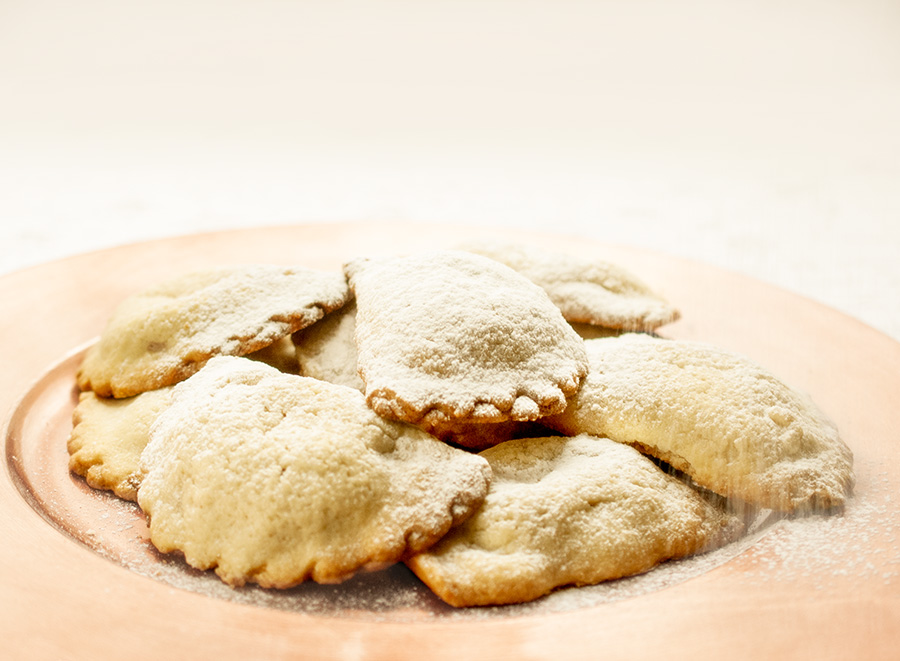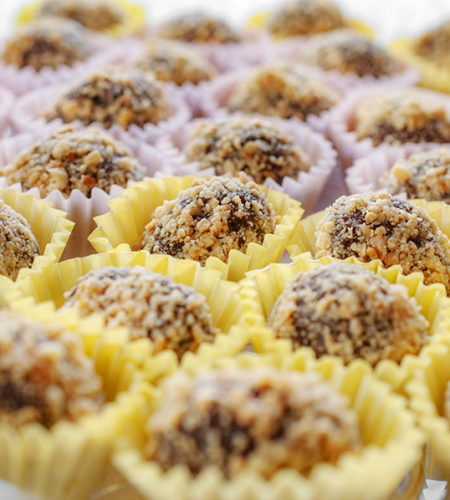This is a biscuit originally from Abruzzi dating back to the end of the 1700s. It was imported a few years later to Rome and became a typical sweet of the Roman carnival.
But now it has fallen into disuse, only a few bakeries sell them in Testaccio. What a pity!
Ricotta Cookies: Bocconotti
- Preparation time: 90 minutes + 2 hours resting
- Ingredients for 4-6 servings
- Difficulty: Easy recipe
- Ingredients
- For the dough:
- 275 gr or 10 oz of pastry flour
- 75 gr or 3 oz of butter
- 75 gr or 3 oz of lard
- 150 gr or 5 oz of sugar
- 1 egg
- 1 pinch of salt
- Zest of a lemon
- For the stuffing:
- 1 tablespoon of cinnamon powder
- 1 tablespoon of pastry flour
- 50 gr or 2 oz of candied orange cut into small pieces
- 2 eggs
- 275 gr or 10 oz of ricotta cheese
- 50 gr or 2 oz of sugar
- Instructions
- Prepare the dough. In a bowl mix the butter and lard with the sugar. Add the egg, the grated lemon rind, and finally the flour. Quickly mix the ingredients and form a loaf. Cover it with cellophane and let it rest in the refrigerator at least two hours, even better for 12 hours.
- Prepare the filling. In a bowl, sift the ricotta and mix it with the sugar. Add the flour and cinnamon while stirring constantly. Finally, add the candied fruit cut into small pieces.
- Spread the pastry about 3 mm or 0 1⁄8inch with a rolling pin on a floured surface. Cut out biscuits with a square pastry cutter. Put a little filling on each square and overlap it with another to enclose the cream. I made them round giving them a half-moon shape even if the traditional recipe provides them with squares.
- Arrange the cookies on a baking sheet lined with parchment paper.
- Bake in a preheated oven at 325° F for about forty minutes.
Tips to ensure the success of the dish:
- Ricotta cheese should be left in the fridge in a sieve and a basin to remove as much serum as possible. The right time for this procedure is from 12 hours to 24 hours.
- To form the cookies well, the edges of the biscuit should be lightly dampened with a veil of water before covering with the second square of biscuit and sealing the edges with the tines of a fork.




